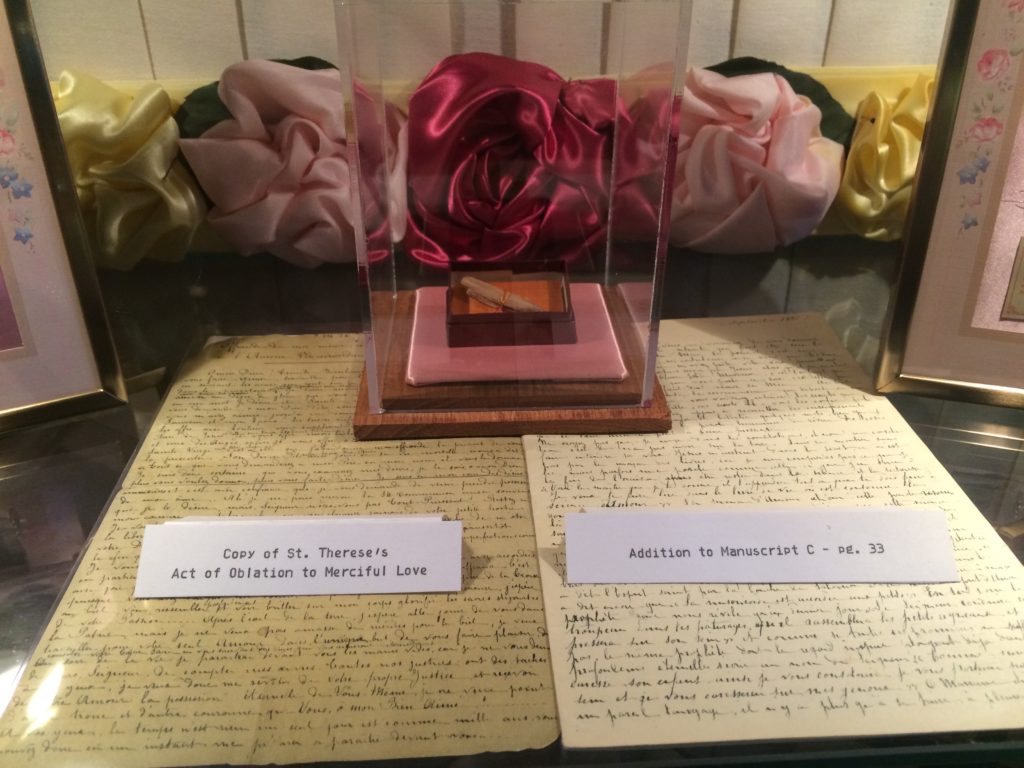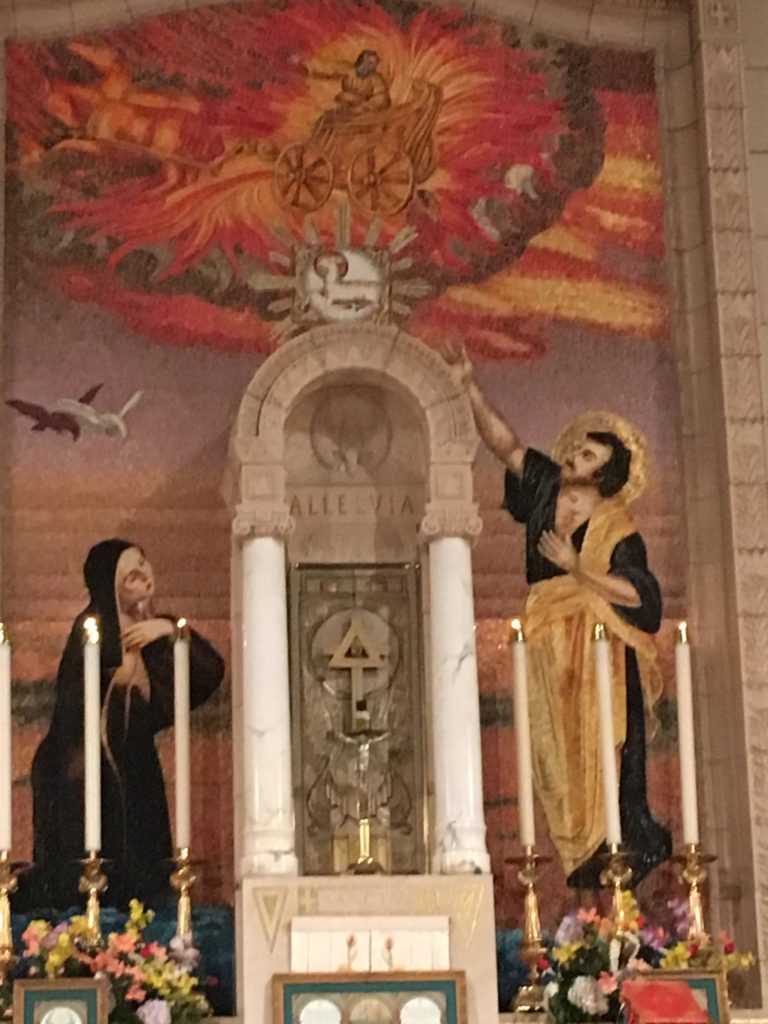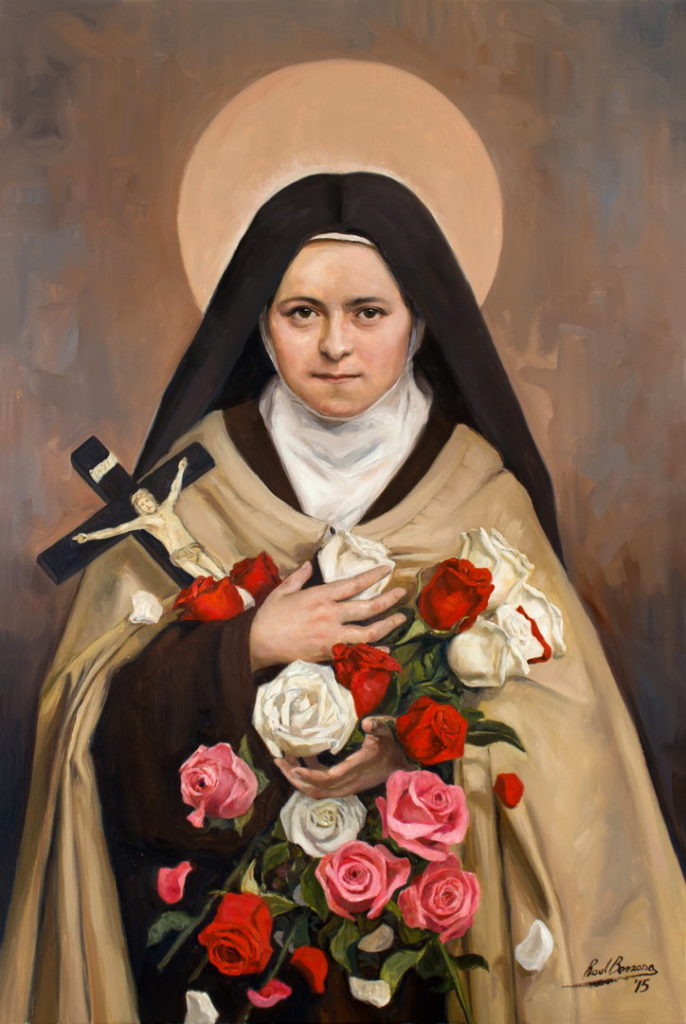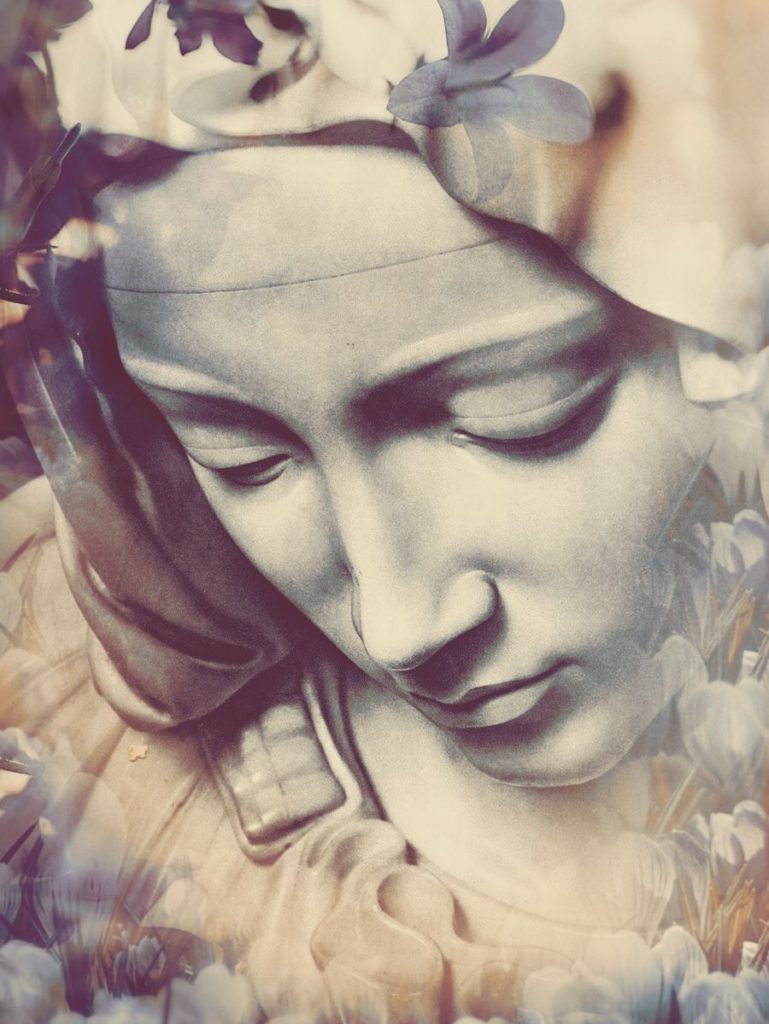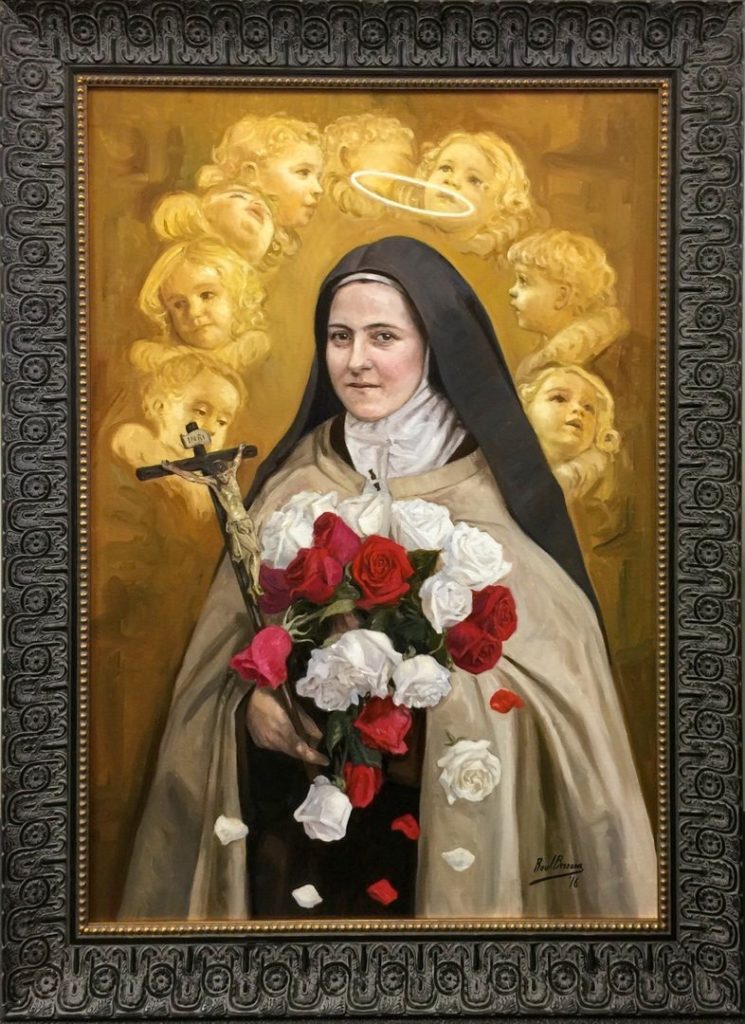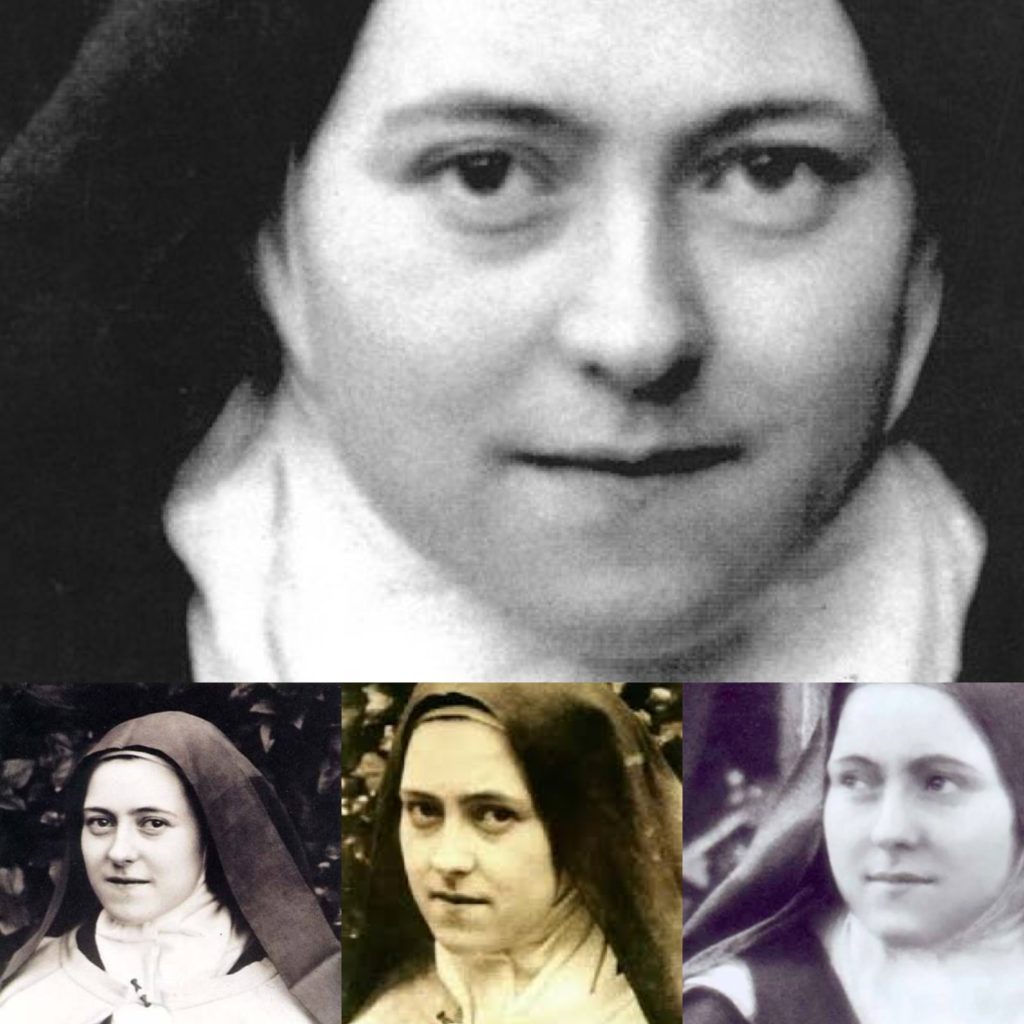
Feast Day Novena Prayer
St. Therese, Flower of fervor and love, please intercede for us. Fill our hearts with your pure love of God. As we approach and celebrate your feast day, make us more aware of the goodness of God and how well He tends His garden. Instill in us your little way of doing ordinary things with extra-ordinary love.
Give us the heart of a child who wonders at life and embraces everything with loving enthusiasm. Teach us your delight in God’s ways so that divine charity may blossom in our hearts. Little Flower of Jesus, bring our petitions (mention in silence here) before God, our Father.
With your confidence, we come before Jesus as God’s children, because you are our heavenly friend. As we celebrate the Feast Day of your homecoming in heaven, continue to shower roses and grace upon us.
Amen
St. Therese’s Path of Prayer
As a child Thérèse lived in a family atmosphere of prayer. She prayed for her friends, for an enjoyable holiday for her dad, for good weather for her cousin at the seaside, and she asked others to pray for her.
She was an intuitive and reflective person like her father. Through reflective prayer she gained insights into God (His power and beauty), into life (especially its transitory nature), and into eternity.
At her First Holy Communion Jesus became more than ever the center of her prayer. She longed to be alone with Him, above all during her own lonely hours. She learned to meditate in simple heart-to-heart conversations with Him.
At 14 under the grace of Christmas her mind matured. Her Prayer broadened and strengthened under the influence of solid reading. She writes of her experiences of God in the Belvedere, the top floor the Martin home. These seem to be mystical experiences for she writes of advancing in virtue “under divine impressions” and “He taught me in silence the secrets of His love.” Through Pranzini, a notorious murderer at that time, she experienced the power of prayer and became an apostle of prayer.
She had been purified through her excessive sensitivity, scruples, illness, mother’s death, Pauline’s and Marie’s entrance to Carmel. This was a dark night of sense. By the time Thérèse entered Carmel she was a mature woman deeply in love with God, who prayed by reading solid books and reaching out to God in prayer in acts of love.
She entered the Carmel of Lisieux at 15 years of age. From that time she tells us her prayer was full of dryness and dereliction. Seven years later she was still concerned about dryness and drowsiness. She found it heartbreaking that she was so dry and full of distractions after Holy Communion. “I don’t know of any moment at which I experience less consolation.” God’s love was purifying her love. No longer did she find sensible joy in prayer and the Eucharist. She experienced the dark night (Saint John of the Cross). She suffered from the harshness of Mother Gonzague, from the trials regarding her vocation and the questioning whether God loved her. The thought of heaven – which once was her great consolation, giving meaning to her life and strength to bear her father’s insanity – now no longer helped her. It hurt; mocking voices became torture. A wall descended; what gave joy now gave pain – a characteristic of the night. Yet she said, “Aridity increased; no comfort in heaven or on earth, yet I was the happiest of mortals.”
During her illness she told Mother Gonzague that all she wanted was that God’s will be fulfilled in her. In her dark night her will was purified (e.g., by the postponement of her profession). In her aridity she became detached from creatures, and lived humbly in God. She grew in facility in the practice of the virtues and in trust in God.
We note that when she had her first hemorrhage that she felt joy and was thrilled at the thought of being with her beloved. Very soon her soul was plunged in darkness. She understood atheism, for she experienced the void, loneliness and suffocation of a godless life. Father Godfrey tells that at 18 Thérèse believed she was damned by God – but this led her to trust Him and abandon herself more totally to Him.
She suffered pain of body and of soul. She likened it to purgatory as does St. John of the Cross – a purification by love, not by fire. She experienced deep peace and joy and tells us that in the temptations against faith she made more acts of faith than at any other time in her life. “He knows I try to live by faith even though it affords me no consolation. I ask no other favor beyond that of never offending Him.” Her faith, love and trust were purified and strengthened in this dark night of the spirit.
In her we see the effects of this dark night as described by St. John of the Cross:
1. Her intelligence is purified as she receives clear insights.
2. Her will is purified in a growth of love.
3. Her security in God develops as she grows in trust and confidence.
4. Her faith is purified as she makes more acts of faith and the Creed, written in her blood, becomes her guideline.
5. She becomes more apostolic.
Her apostolic spirit reached out to sinners because she experienced their pain. She also experienced God’s love and wanted to share it. Her love grew. She chose all, and in her prayer finds all her desires fulfilled. “In the heart of my mother the Church I will be love” – a love that goes beyond the confines of space and time, Like the Crucified Christ with His arms open to embrace the world, Thérèse on her cross of physical pain, of loneliness, of spiritual darkness, opened her heart to embrace the world.
On her deathbed Celine went to visit her and scolded her, “You should be trying to sleep.”
“I cannot,” said Thérèse, “I’m praying.”
“What are you saying to Jesus?”
“I say nothing . . . I just love Him.”
SOURCE: Seattle OCDS Congress, date unknown
Editor’s note: Those of you who want to learn more about Saint Thérèse can also visit Maureen O’Riordan’s blog, “Saint Thérèse of Lisieux: A Gateway,” at http://www.thereseoflisieux.org/. She is a dear friend of Father James Geoghegan of the San Jose Monastery, CA.

